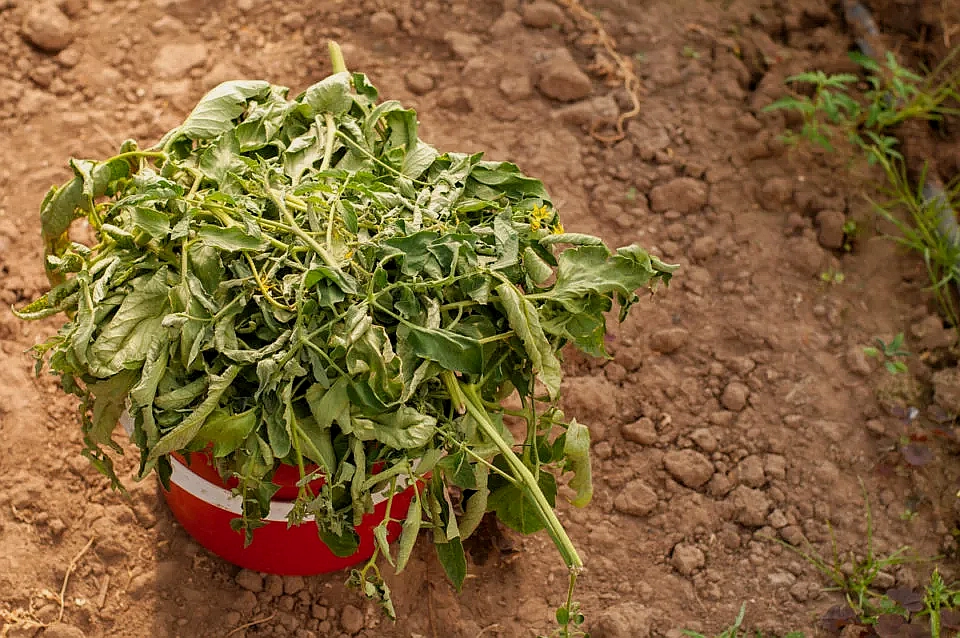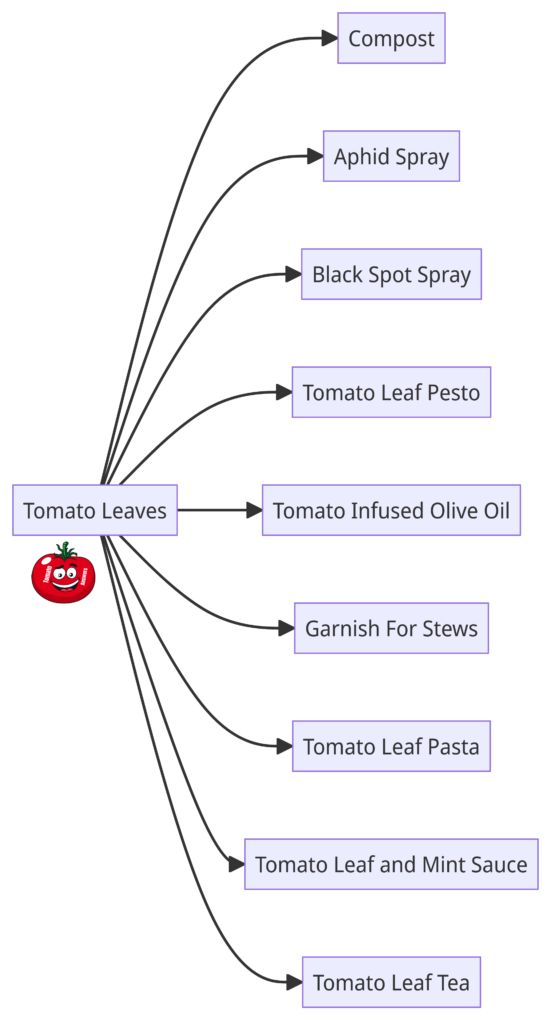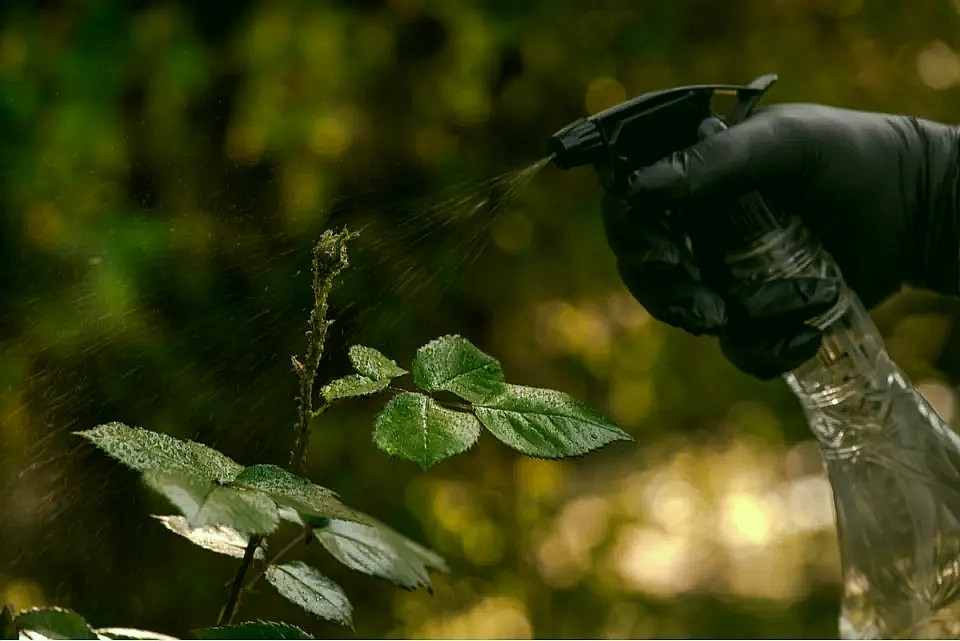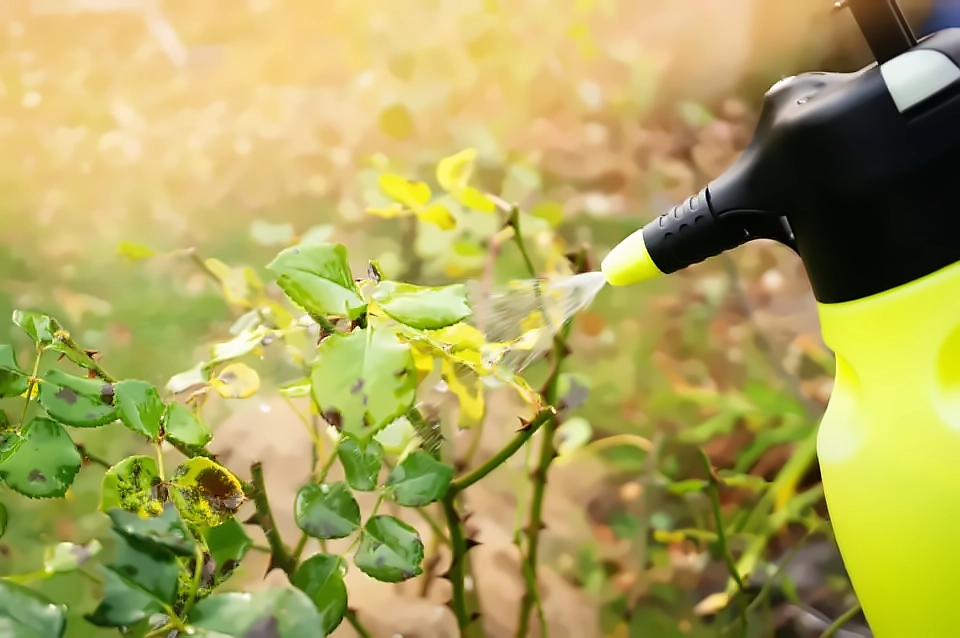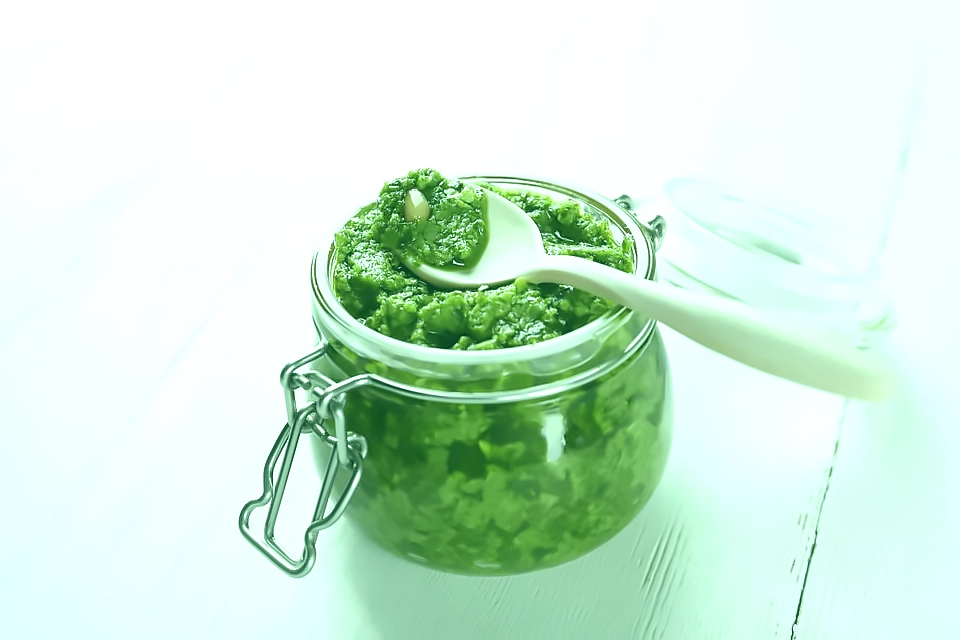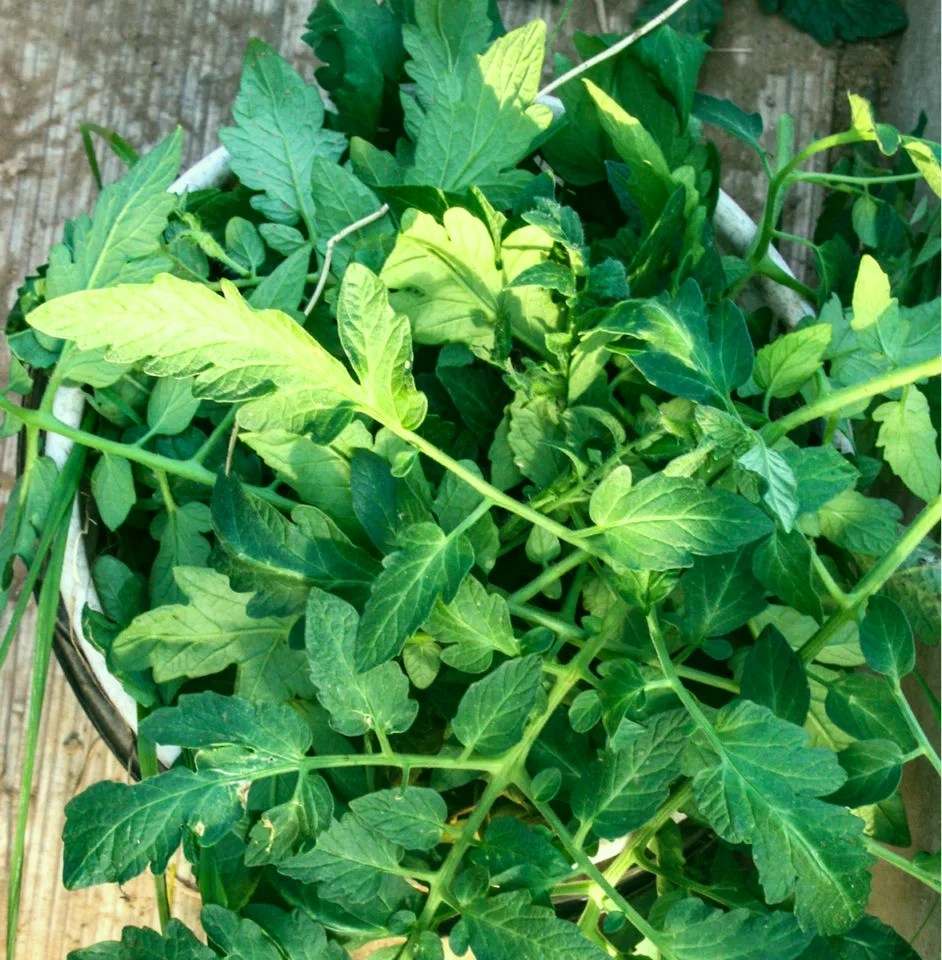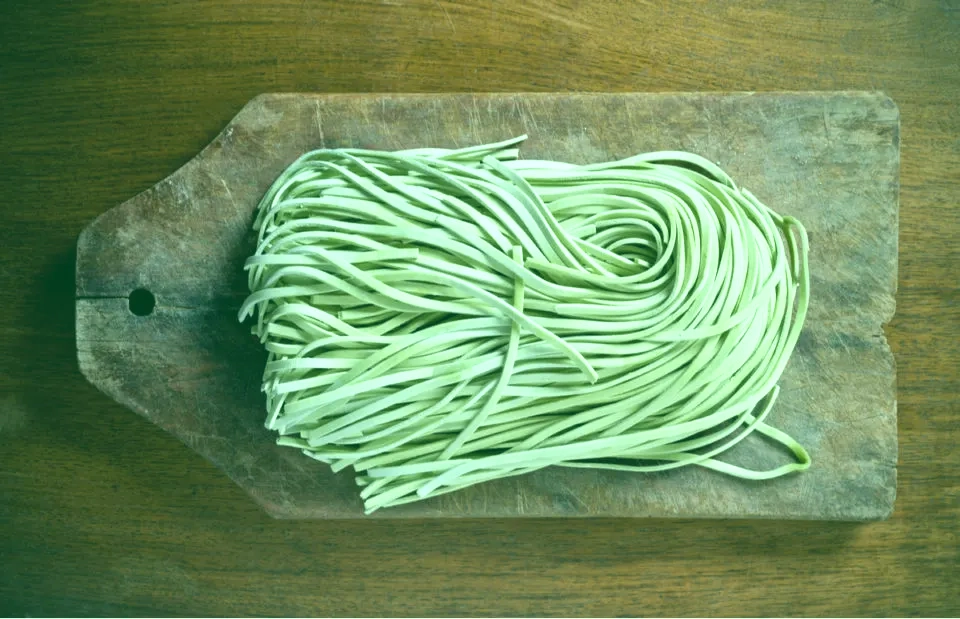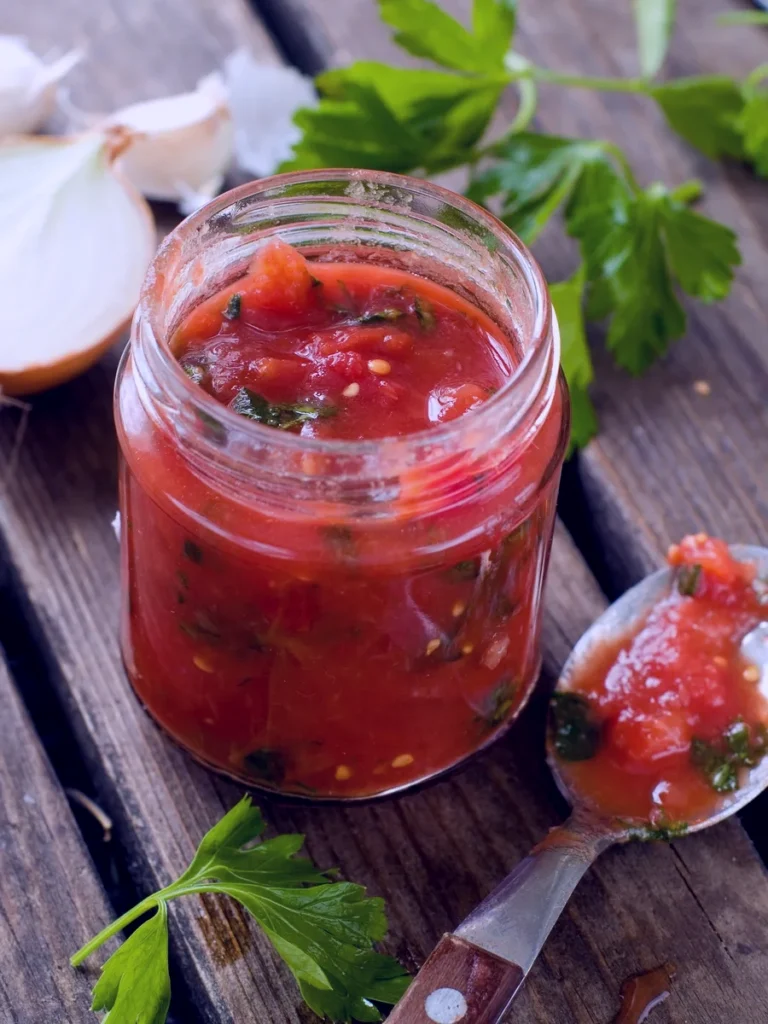Key Takeaways
– 🌱 Tomato leaves have multiple practical applications in the garden and kitchen.
– 🌱 Tomato leaves can be added to compost piles to enrich them with nutrients.
– 🌱 Tomato leaves can be used to create homemade aphid insecticide spray to eliminate aphids.
– 🌱 Tomato leaves may provide some protection against Black Spot disease on roses.
– 🌱 Tomato leaves can be used to make tomato leaf pesto, infused olive oil, and garnish for stews.
– 🌱 Tomato leaves can be added to pasta recipes and tomato sauces for enhanced flavor.
– 🌱 Tomato leaves can be used to make tomato leaf and mint sauce.
– 🌱 Tomato leaves can be used to make tomato leaf tea, which has a pleasant earthy flavor.
– 🌱 Tomato leaves contain alkaloids that can be harmful if ingested in large amounts, so they should be used sparingly and with caution.
Uses for Tomato Leaves: Innovations in Your Garden
It’s tomato harvesting season, and we are blessed with an abundance of this beloved fruit (or vegetable, if you prefer).
As you’ve been pruning your tomato plants, you might have wondered if those chopped off leaves serve any purpose. Or perhaps you’ve been avoiding them altogether, thinking they are poisonous.
Who knew tomato leaves had so many practical applications? Whether you’re tending to your garden or whipping up a tasty dish in the kitchen, these versatile leaves have got you covered. And the best part?
By exploring these uses, you can create a garden and kitchen that produce zero waste. So why not give these ideas a try, or even come up with your own innovative uses?
Let’s dive in and make the most of every part of the tomato plant!
Before You Start
It is important for you be aware of the concern surrounding toxins in tomato leaves before considering any of these uses, especially the recipes.
Tomato leaves contain alkaloids tomatine and solanine, which are present in other plants of the nightshade family like potatoes. Ingesting large amounts of these compounds can be toxic to humans, raising concerns about the safety of consuming tomato leaves.
Consuming a large amount of tomato leaves is unlikely to have any harmful effects. These compounds can also be found in green tomatoes, which are commonly eaten and used in various recipes.
Individual sensitivity to alkaloids can vary, therefore it is advisable to be cautious. If you have had difficulties consuming green or ripe tomatoes, it is recommended to avoid tomato leaves. Otherwise, they are generally deemed safe to consume in limited amounts.
9 Uses For Tomato Leaves
1. Compost
The most common option at the end of the season is to throw them on the compost heap.
Tomato plants, particularly indeterminate varieties, have the potential to grow to a considerable size. This can be beneficial for compost piles that require additional nitrogen.
Homemade compost can provide significant benefits to any garden, and incorporating spent tomato leaves can enhance the overall quality of the compost pile by enriching it with nutrients.
Regrettably, there are certain risks involved.
Because tomatoes are susceptible to diseases, it is important to inspect them carefully before composting. Any disease present on the tomatoes can spread to your compost pile and then to the rest of your garden when it is used.
If you are confident that your tomato leaves are free of disease, you can safely break them down and add them to your compost.
2. Aphid Spray
Many gardeners have dealt with aphids at some point, and they could be currently affecting your tomato plants. If you haven’t encountered them yet, consider yourself fortunate and buy a lottery ticket immediately.
Aphids are a common garden pest, especially in vegetable gardens. They have a rapid reproduction and spread, which can lead to the destruction of entire crops if not controlled promptly.
Certain aphid removal methods have the potential for negative effects on other plants and the surrounding environment. Fortunately, you can create your own aphid insecticide spray using leftover tomato leaves, which effectively eliminates these pests upon contact.
Tracey at Rural Sprout provides a simple recipe for insecticide spray on their website. This natural spray can be made quickly and will be useful throughout the entire season.
3. Black Spot Spray
Black Spot is a common disease that affects rose plants. While not highly lethal, it weakens roses and negatively impacts their appearance, which is undesirable for rose gardeners. This fungal disease can spread rapidly and lead to yellowing and deforestation if not managed or prevented.
There are various preventative measures available for this common disease, including the use of a tomato leaf spray. It has been suggested that the compounds found in tomato leaves may provide some protection against fungal diseases like Black Spot on roses. While the evidence is primarily based on personal experiences, it may be worth attempting if you have additional leaves at your disposal.
Apply the same recipe as the aphid spray to the leaves and stems of your roses regularly, starting from the beginning of the season. It is important to spray as a preventive measure, as it will not effectively control or eliminate Black Spot once it has already established.
4. Tomato Leaf Pesto
Moving on to tomato leaf recipes, we begin with the most well-known application – pesto.
Tomato leaves have a distinctive taste that combines earthiness, slight bitterness, and spice, making them a great addition to pesto. Additionally, using a lot of your tomato harvest at once allows you to create a delicious spread that can be stored in the fridge for up to 5 days.
Riverford Organic Farmers in the UK offer a tasty recipe for tomato leaf pesto. Additionally, a video is available below to provide a detailed explanation of the process.
5. Tomato Infused Olive Oil
Infused oils are currently popular, and making infused olive oil is simple and affordable compared to store-bought options. Tomato leaves are among the many ingredients that can be infused in olive oil, adding an earthy and slightly tomato-like flavor to the oil.
To infuse, place leaves in olive oil for a few weeks. For a stronger flavor, blend tomato leaves and add to olive oil on low heat. Remove from heat when oil bubbles and let it cool. Strain into a bottle and seal for later use.
This infused olive oil can be used to enhance the flavor of freshly cooked bread or add a touch of tomato to fresh pizzas.
6. Garnish For Stews
The flavor of tomato leaves adds a unique taste to meaty dishes like stews. Similar to other earthy herbs such as rosemary, the leaves can be dried and sprinkled in to enhance the flavor.
Meredith at Rural Sprout provides a straightforward guide for drying herbs at home. These techniques can also be applied to tomato leaves, or they can be added fresh and finely chopped into stews.
7. Tomato Leaf Pasta
Fresh, homemade, and hand-rolled pasta is widely regarded as the ultimate choice when it comes to pasta options. The reason behind this lies in its exceptional flavors and delightful texture.
But that’s not all! To take your pasta experience to a whole new level, try adding tomato leaves and a freshly roasted tomato sauce. These ingredients work wonders in enhancing the overall taste of the dish, giving it a unique and irresistible twist.
If you’re curious to try out a visually satisfying recipe that ticks all the boxes, Vanessa Miles from The Hungry Chook has got you covered. You can find her recipe right here.
8. Tomato Leaf and Mint Sauce
Tomato sauce is commonly used in households for various purposes, such as in pasta, on bread, or as a dip. It adds a sweet and acidic taste to dishes.
To enhance the flavor of homemade tomato sauce, you can incorporate a few fresh tomato leaves and balance it out with the refreshing taste of mint leaves.
You can try this delicious recipe from Garden Betty that can be used immediately, stored in the refrigerator for up to two weeks, or frozen for future use.
9. Tomato Leaf Tea
For tea enthusiasts who enjoy experimenting with different combinations, consider adding dried tomato leaves to your collection. While not a conventional choice, it is indeed possible to brew tea from tomato plant leaves, whether they are fresh or dried.
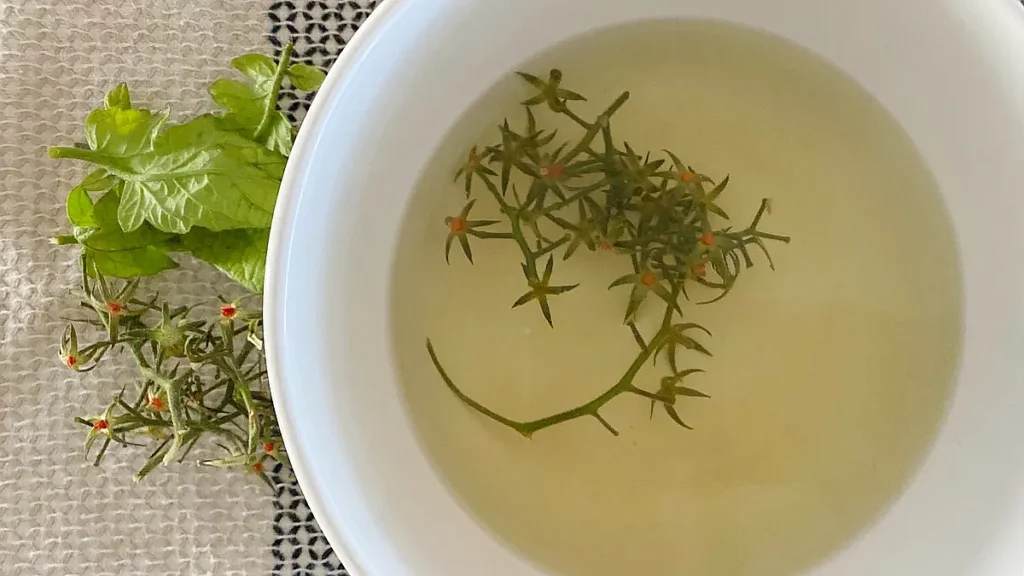
Lakisha from Saving Greens Homestead explains that the taste of tomato leaf tea is surprisingly subtle despite the strong smell of the plant. You can learn how to make tomato leaf tea by watching the video below.
Tomato leaf tea has a pleasant earthy flavor, similar to other leafy green teas.
Tomato leaves have unique compounds and flavors that make them useful in various ways in your home, even though they may not be a common choice in the garden or kitchen.
Can We Eat Tomato Plant Leaves?
While tomato plants are known for their delicious fruit, the leaves are generally not consumed. The reason for this is that tomato leaves contain compounds called alkaloids, specifically tomatine and solanine, which can be harmful if ingested in large amounts. These compounds are part of the plant’s natural defense system against pests.
In small amounts, they are unlikely to cause harm, but eating a large quantity of tomato leaves could potentially lead to symptoms like nausea, vomiting, and in severe cases, neurological effects.
However, some people do use tomato leaves in cooking for their unique flavor. They are typically used in a way that imparts flavor but are removed before eating, similar to a bay leaf. For instance, a few leaves might be added to a pot of soup or tomato sauce and then taken out before serving. It’s important to note that this is not a common practice and is done at one’s own risk.
Tomato leaves aren’t typically part of our diet, they can be used sparingly for flavoring in some recipes. However, they should never be consumed in large amounts due to the presence of potentially harmful alkaloids.
Frequently Asked Questions (FAQs)
How Do You Use Tomato Leaves As A Pesticide?
Tomato leaves can be used as a natural pesticide by creating a spray. This involves boiling the leaves in water, letting the mixture cool, and then straining it into a spray bottle. The natural compounds in the leaves deter pests.
What Are The Benefits Of Tomato Leaves For Skin?
Tomato leaves are rich in antioxidants and can help to soothe and rejuvenate the skin. However, they should be used with caution as some people may have an allergic reaction.
What Can I Use Tomato Leaves For?
Tomato leaves can be used for a variety of purposes including as a natural pesticide, in cooking for added flavor, and in skincare for their antioxidant properties.
Are Tomato Leaves Good For Skin?
Tomato leaves have antioxidant properties which can be beneficial for the skin. However, they should be used with caution as some people may have an allergic reaction.
Why Do Tomato Leaves Smell So Good?
Tomato leaves have a distinctive, fresh, and earthy aroma. This is due to a combination of natural compounds in the leaves, including geraniol and citronellol.
Can You Touch Tomato Leaves?
Yes, you can touch tomato leaves. However, some people may experience skin irritation due to the presence of solanine, a natural compound in the leaves.
Can Chickens Eat Tomato Leaves?
No, chickens should not eat tomato leaves. They contain solanine, a compound that can be toxic to chickens if consumed in large quantities.
What Is The Benefits Of Tomato Leaf Oil?
Tomato leaf oil has a unique, fresh fragrance and is often used in perfumery. It also has antioxidant properties which can be beneficial for skin health.
What Are The Health Benefits Of Tomato Plant?
The tomato plant, including its fruit, leaves, and stem, has various health benefits. It’s rich in antioxidants, vitamins, and minerals. However, only the fruit is typically consumed, as the leaves and stem can contain toxic compounds.
Why Do Tomato Leaves Smell So Good?
Tomato leaves have a unique, fresh, and earthy scent due to a combination of natural compounds, including geraniol and citronellol.
How Many Tomato Leaves Can I Remove?
You can remove any yellow, spotted, or diseased leaves from your tomato plant. However, avoid removing too many leaves at once as this can stress the plant.
What Tomato Leaves Tell You?
The state of tomato leaves can tell you a lot about the health of your plant. Healthy leaves are a vibrant green color, while yellow or spotted leaves can indicate a disease or nutrient deficiency.
Why Are Tomato Leaves Not Wet?
Tomato leaves should not be wet as this can promote the growth of fungal diseases. It’s best to water tomato plants at the base to keep the leaves dry.
Can We Spray Water On Tomato Leaves?
While it’s possible to spray water on tomato leaves, it’s generally not recommended as this can promote the growth of fungal diseases. It’s best to water at the base of the plant.
Are You New To Tomato Answers?
If you are new to Tomato Answers, then here are a few resources that will help you:
- Craving for some Celebrity Tomatoes? Find out what makes it so special! – Celebrity Tomato
- Looking for the perfect tomato sauce recipe? Try this Instant Pot version! – Instant Pot Tomato Sauce Recipe
- Growing tomatoes: The Dos and Don’ts you need to know! – Growing Tomatoes: Dos and Don’ts
- How much does a pint of cherry tomatoes weigh? Find out here! – How Much Does A Pint Of Cherry Tomatoes Weigh?
- Master the art of growing tomatoes from seeds! – How To Grow Tomatoes From Seeds?
- Uncover the secret to tell if a tomato flower is pollinated! – How To Tell If Tomato Flower Is Pollinated?
- Pesky tomato bugs ruining your crop? Find the solution here! – Tomato Bugs
- When is the best time to harvest your cherry tomatoes? Find out here! – When To Pick Cherry Tomatoes: Harvesting Tomatoes
- Why did the tomato blush? Uncover this charming riddle! – Why Did The Tomato Blush?

